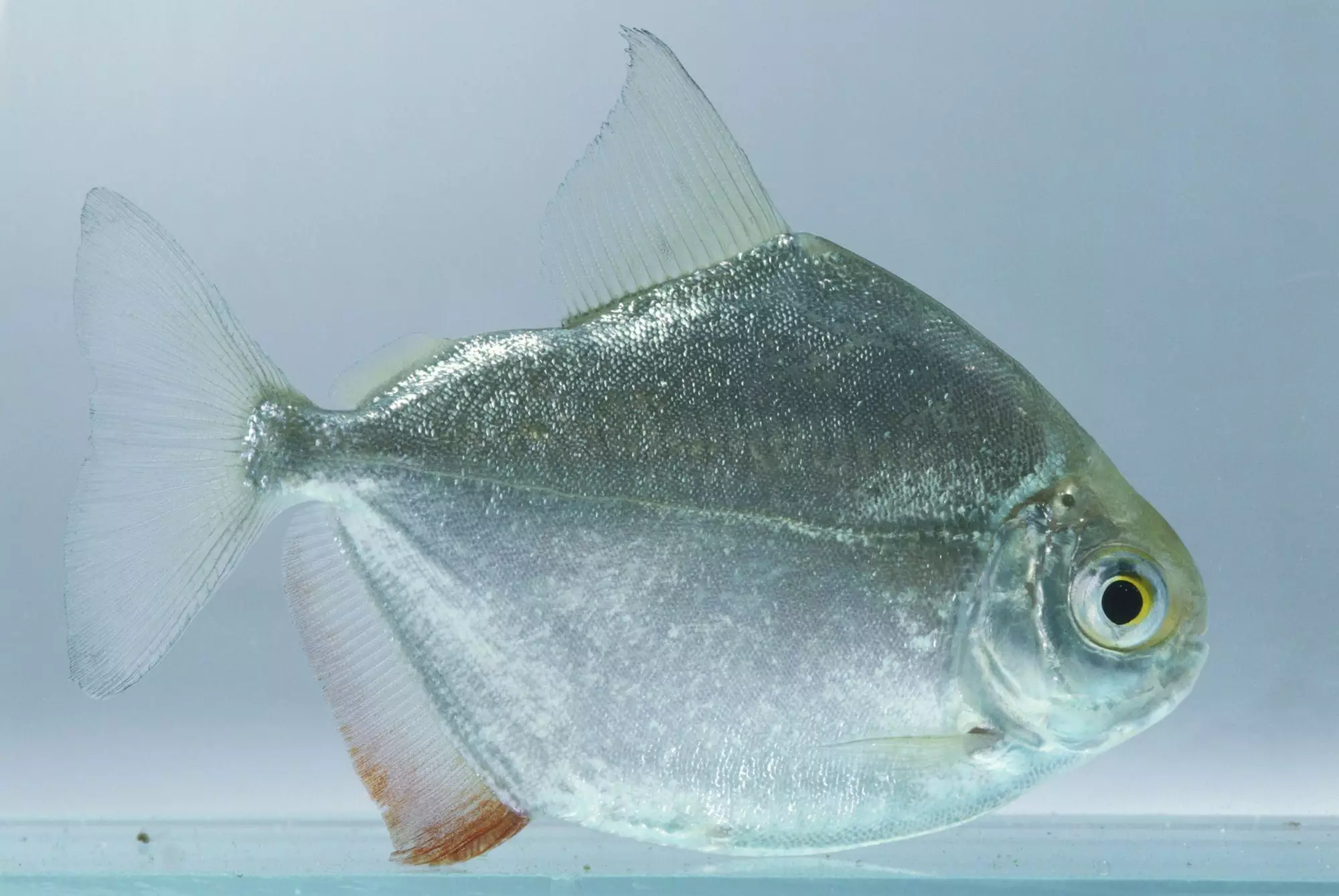The Silver Dollar Fish (scientific name: Metynnis argenteus) is not only a charming addition to freshwater aquariums but also an engaging species with captivating attributes. Characterized by its round, flat, and lustrous body that resembles a shining silver dollar coin, this fish commands attention. Though often seen in pet shops as small as a dime, they can grow impressively to sizes nearing six inches in diameter. With a life expectancy exceeding ten years, the Silver Dollar is not just a fleeting aesthetic; it is a commitment that can offer years of joy to an aquarium enthusiast.
Originating from the Tapajós River Basin in Brazil, the Silver Dollar flourishes in the shallow waters of northern South America’s river systems. Several species, commonly categorized under the umbrella term “silver dollar,” exist within the aquarium trade, including the likes of Metynnis hypsauchen and Myleus rubripinnis. However, Metynnis argenteus stands out as the quintessential model. These fish prefer environments that provide adequate hiding spots and ample open space to swim freely, distinguishing themselves in aquarist circles as both a beautiful and adaptable choice.
The Silver Dollar Fish showcases an appealing silvery sheen that often displays hints of green or blue when struck by light. Healthy individuals exhibit small, distinctive dots along their sides, while males display bright red edging on their anal fin, adding a touch of vibrancy to the aquarium. Males also develop darker markings during breeding times, which intensify their aesthetic allure. This physical distinction aids aquarists in identifying male and female specimens, with males typically showcasing more vivid colors compared to their female counterparts.
Being a natural shoaling species, Silver Dollars thrive in groups of six or more. Individual specimens tend to become shy and skittish when isolated, which can lead to stress and diminished health. Maintaining a peaceful community is essential, which allows them to coexist harmoniously with species such as plecos and non-aggressive cichlids. A minimum tank size of 75 gallons is advisable to accommodate a school of Silver Dollars, ensuring they have enough space to swim and explore their surroundings. The ideal habitat includes soft, dim lighting, dark substrates, and plenty of structured hiding places to create an inviting atmosphere.
Interestingly, despite being part of the same family as the notorious piranha, Silver Dollars are predominantly herbivorous. Their diet is comprised mostly of vegetable-based foods, such as spirulina flakes, leafy greens, and other plant materials. They enjoy the occasional meaty treat, such as bloodworms or brine shrimp, but care must be taken to monitor feeding times to prevent more dominant tank mates from monopolizing food resources. Uneaten remnants of food should be promptly removed to maintain water quality, an important aspect of their care.
Breeding Silver Dollar Fish can be an exciting endeavor for aquarists. These fish reach sexual maturity at approximately one year of age and about four inches long. To facilitate successful breeding, it is advisable to condition males and females separately prior to introducing them to a breeding environment. While Silver Dollars are natural group spawners, using known pairs can yield better results. Creating a dimly lit breeding tank with soft water and fine-leafed plants will encourage spawning, during which females can lay as many as 2,000 eggs.
Those interested in freshwater aquariums should certainly consider the Silver Dollar Fish for its beauty, peaceful nature, and relative ease of care. With proper attention to tank size, water quality, and social dynamics, they thrive and provide a rewarding aquarium experience. The Silver Dollar’s enchanting appearance, coupled with its appealing temperament and hardiness, makes it a cherished choice for both novice and experienced aquarists alike. Whether you are building a community tank or solely focusing on Silver Dollars, understanding their needs and behaviors will ensure a flourishing aquatic environment.

